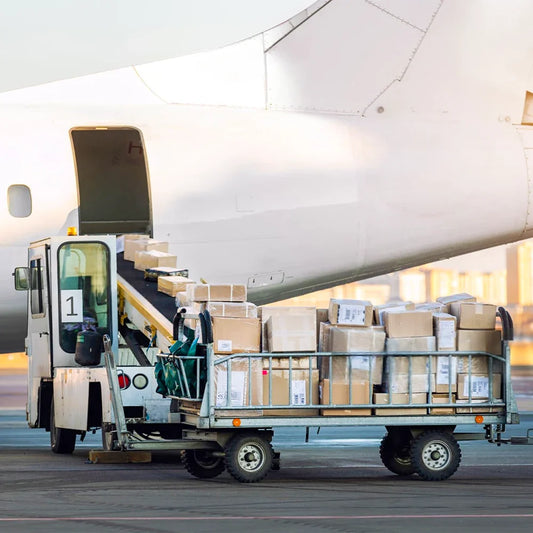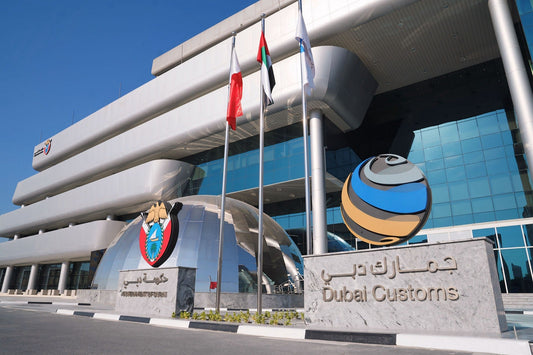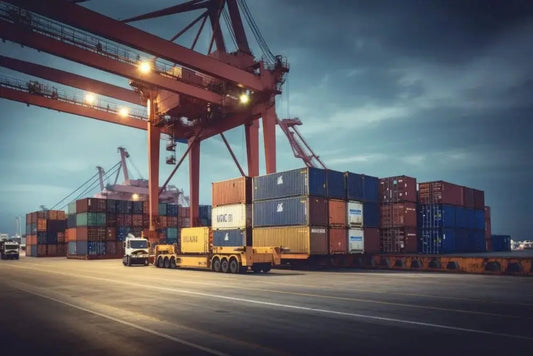Transit Cargo in Dubai – We Handle It All

Table of contents
- Reasons for Transshipment
- Common Destinations for Transshipment
- Small or Remote Destination Ports
- Low-Volume Trade Routes
- Landlocked Countries Using Nearby Seaports
- How Freight Broker Can Help You with your Transshipment
The majority of global transshipments happen because not all ports are connected by direct vessel routes. Instead, cargo is shipped via major hub ports (like Singapore, Dubai, or Rotterdam), where it is transferred from one vessel to another before reaching the final destination.
Reasons for Transshipment
The most common reasons when we do transshipment is for small or remote destination ports, low-volume trade routes, landlocked countries using a nearby seaport as a transit hub.
For example, a container from a small Chinese city going to an African port may travel like this: Shenzhen → Singapore (hub port, transshipment) → Mombasa, Kenya. Without transshipment, such trade would not be possible efficiently.
Another common reasons include: to consolidate cargo from multiple suppliers before re-exporting, to switch the Bill of Lading or origin for trading purposes or to take advantage of bonded zones and save on duties or VAT.
This is popular for trading businesses or resellers who buy from factories and want to rebrand or consolidate shipments under their name. Consolidating cargo from multiple suppliers in one location (like Dubai) allows for cheaper full container loads (FCL) instead of expensive small shipments (LCL). Transit hubs offer better shipping rates and frequent sailings to global ports.
Some companies use transshipment hubs to bypass trade restrictions or embargoes, although this must be done carefully to remain legally compliant.
Goods may be stored, relabeled, repackaged, or combined with other products before being re-exported.
In places like the UAE, cargo can be imported into free zones without paying duties/VAT, stored, and later re-exported—offering huge cost savings.
Common Destinations for Transshipment
Small or Remote Destination Ports
Countries in Indian ocean don’t receive direct vessel calls due to their size or location. Instead, cargo is transshipped through major hubs. Places like the Maldives, Seychelles, Mauritius, or the Comoros Islands are typically transshipped via Dubai (Jebel Ali), Colombo, or Singapore.
In the Pacific region, shipments to small island nations such as Fiji, Samoa, Vanuatu, and Tonga usually pass through hubs like Singapore, Sydney, or Auckland.
In the Caribbean, cargo destined for smaller islands like Barbados, St. Lucia, and Dominica is transshipped via major regional ports like Miami, Kingston (Jamaica), or Panama.
Low-Volume Trade Routes
When there isn’t enough consistent demand between two ports to justify direct shipping, transshipment becomes essential.
Among low-volume trade routes is from Southeast Asia to inland African countries. These shipments may be routed through Mombasa or Durban first.
Shipments from Asia to small Central American countries may be transhipped in Panama before continuing by feeder vessels.
Landlocked Countries Using Nearby Seaports
Landlocked nations rely on neighbouring coastal countries' seaports and then transport goods by land. For example, Afghanistan uses Karachi or Port Qasim in Pakistan. Ethiopia uses Djibouti as its main gateway. Kazakhstan, Uzbekistan, and Turkmenistan – often use Bandar Abbas (Iran), Poti or Batumi (Georgia), or Dubai (UAE) as transshipment hubs. Nepal relies on Kolkata or Visakhapatnam in India.
How Freight Broker Can Help You with your Transshipment
The transshipment process requires detailed coordination, careful timing, and a deep understanding of customs procedures and global logistics routes.
Freight broker is experienced in planning optimal shipping routes that ensure your cargo moves quickly and economically. Logistics companies manage all the necessary customs documentation and approvals at each stage, including the point of entry and the final handoff to the destination.
In cases where the cargo must wait between shipping legs, forwarders provide secure warehousing in bonded or free zone facilities. This means the cargo can remain duty-free while awaiting its next transport, helping you avoid unnecessary charges and ensuring a smooth flow of goods.
Throughout the entire process, freight brokers maintain full transparency and consistent communication. You'll be informed at every stage, with real-time updates on the status and movement of your shipment.
To sum up, transshipment may seem complex, but with the right partner, it becomes seamless. Logistics partners simplify global shipping so you can focus on growing your business




